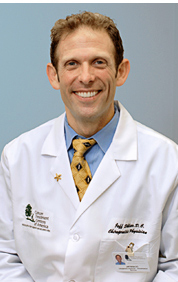A Culture of Collaboration at an Integrative Health Center
A Culture of Collaboration at an Integrative Health Center –
An Interview with David Fogel, MD –
Interviewed by Daniel Redwood, DC
SOURCE: Topics in Integrative Health Care 2014, Vol. 5(3)
Daniel Redwood, DC
David Fogel, MD, is the cofounder (with his wife, Ilana Bar-Levav, MD), of the Casey Health Institute (CHI) in Gaithersburg, Maryland, a nonprofit integrative primary care practice that includes Internal Medicine, Family Practice, Chiropractic, Acupuncture, Massage Therapy, Yoga Therapy, Naturopathic Medicine and more. He is board certified in Internal Medicine with additional specialty training in mind/body focused individual and group psychotherapy.
As an internist, he served in the National Health Service Corps and on the staff at Johns Hopkins University School of Medicine, providing primary care to medically underserved inner city Baltimore residents. He has held positions as Medical Director of Employee Health at NASA Headquarters and as Medical Director of Integrative Medicine Associates in Washington, DC. Dr. Fogel holds a B.A. from Hampshire College and is a graduate of the George Washington University School of Medicine. He completed his residency at Washington Hospital Center.
In this interview, Dr. Fogel describes his journey from conventional to integrative medicine, the unique circumstances surrounding CHI’s founding, the collaborative relationships that comprise its core, and the ways he hopes it can serve as a model for new methods of healthcare delivery that are both effective and cost-effective.
Tell us how you first branched out from the conventional approaches you were taught in medical school.
I was first exposed to the concept of chi as a teenager. It’s kind of the classic story — I was beaten up, and as a result I got into the martial arts. There, I learned this incredible concept, that there was energy running through your body. That you can channel it, that it can be used for healing. So that opened me up at a young age to exploring other things. Then, I went to a kind of hippie college, Hampshire College, which opened me up to non-conventional alternatives of all kinds. This included mind-body approaches. I concentrated in humanistic psychology.
I went on to medical school. This was the era when Nixon went to China, and suddenly there were acupuncturists in the DC area. I said to myself, I need to go to an acupuncturist just to experience what it is. The Traditional Acupuncture Institute in Columbia, Maryland was just opening up (now Maryland University of Integrative Health). I kept reading and exploring these sorts of things throughout medical school. Then, in the 1990s, when David Eisenberg published his landmark article in the New England Journal of Medicine, about how many people were using complementary and alternative approaches, that gave a lot of people permission to start experimenting with different models, in a more mainstream or public way.
There are more articles like this @ our:

